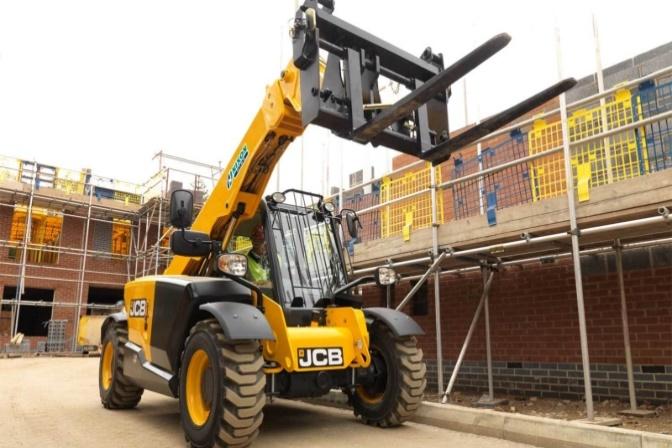Operating a Telehandler Class 7 Forklift

Mastering Safety: A Comprehensive Guide to Operating a Telehandler Class 7 Forklift in Canada
In industrial and construction settings across Canada, the telehandler Class 7 forklift stands as a versatile workhorse, adept at handling materials and navigating diverse terrains. However, with its power and capability come inherent risks, making comprehensive safety protocols paramount. Whether in warehouses, construction sites, or agricultural operations, operators must prioritize safety to mitigate accidents and ensure smooth operations. This guide offers a thorough examination of how to safely operate a telehandler Class 7 forklift in Canada, encompassing essential skills, regulations, and best practices.
Understanding Telehandler Class 7 Forklifts
Before delving into operational procedures, it’s crucial to grasp the fundamentals of telehandler Class 7 forklifts. Unlike traditional forklifts, telehandlers feature a telescopic boom, enabling them to reach heights and distances beyond the capabilities of standard models. This versatility makes them indispensable in various industries, from construction and manufacturing to agriculture and landscaping.
Meeting Regulatory Requirements
Operating a telehandler Class 7 forklift in Canada necessitates compliance with regulatory standards established by federal, provincial, and territorial authorities. Employers and operators must adhere to applicable regulations outlined in the Canadian Standards Association (CSA) B335 standard for forklifts, as well as provincial occupational health and safety legislation.
Additionally, operators must possess the appropriate certifications and training credentials mandated by regulatory bodies. Organizations such as the Canadian Centre for Occupational Health and Safety (CCOHS) offer comprehensive training programs tailored to telehandler operation, covering topics such as equipment inspection, safe operating practices, and hazard recognition.
Pre-Operational Checks and Maintenance
Before commencing any lifting or maneuvering tasks, operators must conduct thorough pre-operational checks to ensure the telehandler is in optimal working condition. This includes inspecting critical components such as hydraulic systems, tires, brakes, steering mechanisms, and safety devices. Any signs of wear, damage, or malfunction should be promptly addressed by qualified maintenance personnel to prevent accidents or equipment failures.
Routine maintenance procedures, such as lubrication, filter replacement, and fluid checks, are essential to prolonging the lifespan of the telehandler and minimizing the risk of mechanical breakdowns. Operators should adhere to manufacturer recommendations and maintenance schedules outlined in the equipment manual to maintain peak performance and reliability.
Safe Operating Procedures
Operating a telehandler Class 7 forklift demands precision, situational awareness, and adherence to established safety protocols. The following guidelines outline key considerations for safe operation:
- Familiarization with Controls: Before operating the telehandler, operators should acquaint themselves with the location and function of all controls, including steering, lifting, and extension mechanisms. Proper familiarity minimizes the risk of errors or unintended actions during operation.
- Stability Management: Telehandlers are susceptible to tipping or instability, especially when carrying loads at maximum reach or on uneven terrain. Operators must adhere to load capacity limits specified by the manufacturer and exercise caution when extending the boom or maneuvering on slopes or soft ground.
- Load Handling Techniques: When lifting and transporting loads, operators should employ proper load handling techniques to maintain stability and prevent shifting or falling. This includes positioning the load within the telehandler’s rated capacity, securing it with appropriate attachments or restraints, and maintaining a stable center of gravity during lifting and movement.
- Safe Travel Practices: While operating the telehandler, operators should observe speed limits, maintain a clear line of sight, and avoid sudden stops or maneuvers that could compromise stability. When traversing ramps, slopes, or uneven terrain, operators should exercise extra caution and reduce speed to mitigate the risk of tip-overs or loss of control.
- Communication and Awareness: Clear communication between operators and ground personnel is essential for safe operations, particularly during load handling and maneuvering tasks. Establishing hand signals or using two-way radios helps coordinate movements and alerts personnel to potential hazards or obstacles in the work area.
- Emergency Procedures: In the event of an emergency, such as a mechanical failure, power outage, or unstable load condition, operators should follow established procedures for safely shutting down the telehandler and securing the work area. Employers should provide training on emergency response protocols, including evacuation procedures and first aid measures.
Environmental Considerations
Environmental factors, such as weather conditions, visibility, and terrain characteristics, can significantly impact telehandler operation. Operators should assess environmental conditions before commencing work and adjust their approach accordingly. For example:
- In inclement weather conditions, such as rain, snow, or high winds, operators should exercise caution and reduce speed to maintain control and stability.
- Poor visibility due to fog, dust, or low light conditions requires heightened awareness and reliance on lighting and signaling devices to maintain safety.
- When operating on rough or uneven terrain, operators should adjust their driving techniques and avoid sudden movements that could lead to loss of control or equipment damage.
Continuous Training and Improvement
Safety is an ongoing process that requires continuous training, evaluation, and improvement. Employers should provide regular refresher courses and updates on safety protocols, equipment operation, and regulatory changes to ensure that operators remain informed and proficient in their roles.
Operators, too, play a pivotal role in maintaining safety standards by staying vigilant, reporting potential hazards or equipment issues, and actively participating in safety initiatives and training programs.
Operating a telehandler Class 7 forklift in Canada demands skill, diligence, and a steadfast commitment to safety. By adhering to regulatory requirements, conducting thorough pre-operational checks, employing safe operating procedures, and remaining vigilant in the face of environmental challenges, operators can mitigate risks and ensure the well-being of themselves and their colleagues.
Through comprehensive training, ongoing education, and a collective dedication to safety, the operation of telehandler Class 7 forklifts in Canada can proceed with confidence, efficiency, and a steadfast commitment to injury prevention and workplace well-being.
